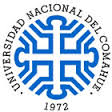JavaScript is disabled for your browser. Some features of this site may not work without it.
Mostrar el registro sencillo del ítem
| dc.creator | Elizalde, Luciana | |
| dc.creator | Lescano, Natalia | |
| dc.creator | Werenkraut, Victoria | |
| dc.creator | Pirk, Gabriela | |
| dc.date | 2021-12-13 | |
| dc.date.accessioned | 2021-12-16T12:41:44Z | |
| dc.date.available | 2021-12-16T12:41:44Z | |
| dc.identifier | http://rdi.uncoma.edu.ar/handle/uncomaid/16576 | |
| dc.description.abstract | Dataset used to carry out the analyses in the article "The more the better? Association between forager number and predation ability in omnivore ant species" Article Abstract: Predation is an important force structuring ecological communities. However, it is still controversial whether larger predator groups are more efficient at exploiting abundant resources. Here, we explored the association between number of foragers and predation ability in generalist ant species that differ in forager numbers when exploiting resources. We conducted a field experiment by increasing caterpillar density around nests of two abundant Dorymyrmex ant species in semiarid Patagonian steppe, where D. tener allocates a higher number of foragers to resource exploitation than D. antarcticus. We (1) compared predation effectiveness (success to complete a task) and efficiency (speed of task performance and fewer foragers involved) between species, and (2) studied how they responded to increasing prey densities, by sequentially adding 3, 6 and 12 larvae in the same foraging arena. Finally, we compared behavioral and morphological traits of each ant species related to predation. Although D. tener discovered similar number of arenas with larvae than D. antarcticus, it was more effective as it recruited more and removed more larvae. This species was also more efficient than D. antarcticus in all predation subtasks, and the time used to remove one larva depended on prey density, being faster for the high-larvae density. This study illustrates how predator group size and individual behavioral characteristics may act in conjunction in social predators, with relevant consequences at ecological, evolutionary and applied levels, including potential implications for pest control. | es_ES |
| dc.format | application/ms-excel | es_ES |
| dc.language | eng | es_ES |
| dc.publisher | Universidad Nacional del Comahue | es_ES |
| dc.rights | Atribución-NoComercial-CompartirIgual 2.5 Argentina | es_ES |
| dc.rights.uri | https://creativecommons.org/licenses/by-nc-sa/2.5/ar/ | es_ES |
| dc.source | Ecological Entomology | es_ES |
| dc.subject | Caterpillar | es_ES |
| dc.subject | Colony size | es_ES |
| dc.subject | Forager response | es_ES |
| dc.subject | Group size | es_ES |
| dc.subject | Odorous ants | es_ES |
| dc.subject | Omnivory | es_ES |
| dc.subject | https://purl.org/becyt/ford/1.6 | |
| dc.subject.other | Ciencias de la Tierra y Medio Ambiente | es_ES |
| dc.title | Numbers matter: predatory ability increases with forager group size in omnivorous ant species with similar predatory traits | es_ES |
| dc.type | conjunto de datos | es |
| dc.type | other | eu |
| dc.type | acceptedVersion | eu |
| dc.description.fil | Fil: Elizalde, Luciana. Universidad Nacional del Comahue. Instituto de Investigaciones en Biodiversidad y Medioambiente; Argentina. | es_ES |
| dc.description.fil | Fil: Elizalde, Luciana. Universidad Nacional del Comahue. Laboratorio Ecotono; Argentina. | es_ES |
| dc.description.fil | Fil: Elizalde, Luciana. Consejo Nacional de Investigaciones Científicas y Técnicas; Argentina. | es_ES |
| dc.description.fil | Fil: Lescano, Natalia. Universidad Nacional del Comahue. Instituto de Investigaciones en Biodiversidad y Medioambiente; Argentina. | es_ES |
| dc.description.fil | Fil: Lescano, Natalia. Universidad Nacional del Comahue. Laboratorio Ecotono; Argentina. | es_ES |
| dc.description.fil | Fil: Lescano, Natalia. Consejo Nacional de Investigaciones Científicas y Técnicas; Argentina. | es_ES |
| dc.description.fil | Fil: Werenkraut, Victoria. Universidad de Buenos Aires. Facultad de Ciencias Exactas y Naturales. Departamento de Ecología, Genética y Evolución; Argentina. | es_ES |
| dc.description.fil | Fil: Pirk, Gabriela. Universidad Nacional del Comahue. Instituto de Investigaciones en Biodiversidad y Medioambiente; Argentina. | es_ES |
| dc.description.fil | Fil: Pirk, Gabriela. Universidad Nacional del Comahue. Laboratorio Ecotono; Argentina. | es_ES |
| dc.description.fil | Fil: Pirk, Gabriela. Instituto de Investigaciones en Biodiversidad y Medioambiente; Argentina. | es_ES |
| dc.cole | Datos primarios de investigación | es_ES |



